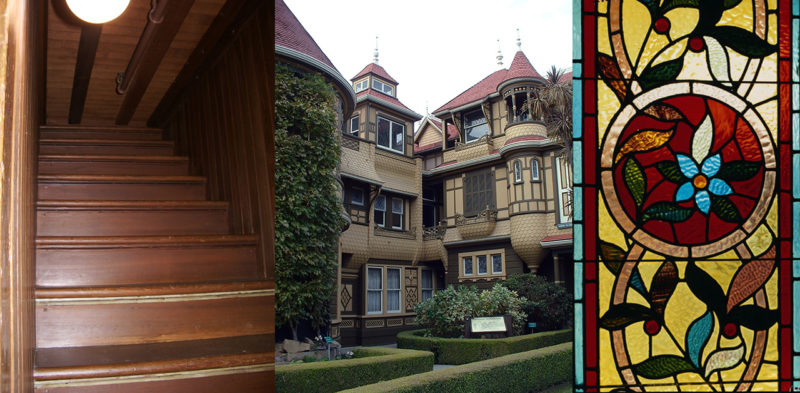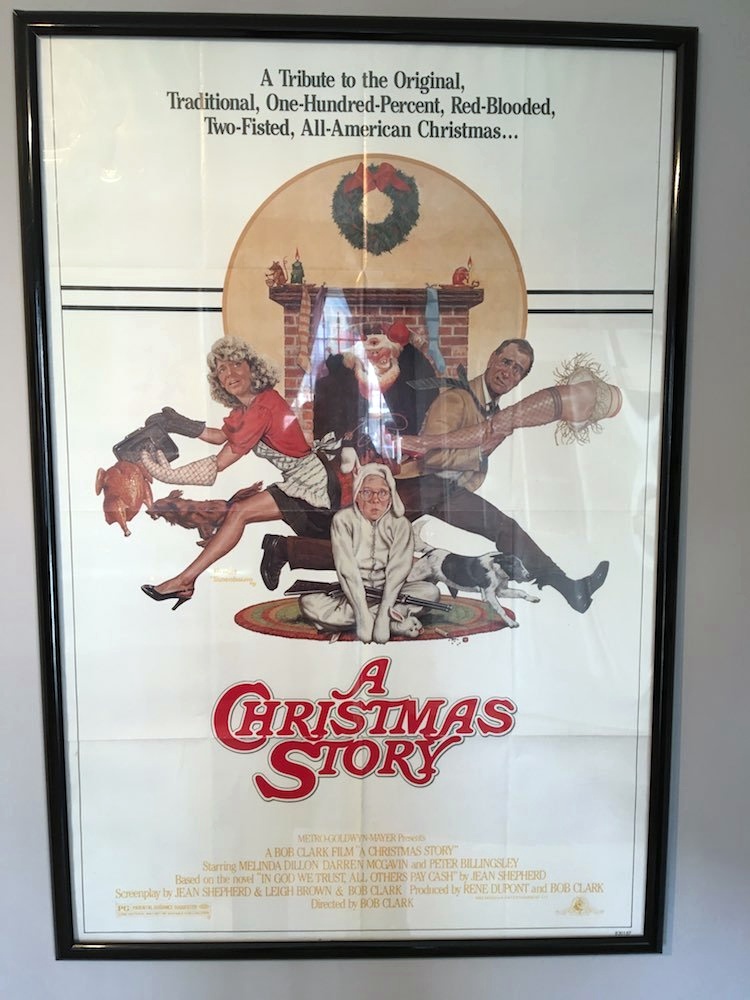Sarah (Pardee) Winchester grew up in New Haven, Connecticut and attended Yale’s Young Ladies Collegiate Institute (please see part one of this series for more on Sarah’s life). She traveled in the social circles that included many of Yale’s progressive thinkers. Both she and her husband had family members who were Freemasons. The influences of her early years followed her throughout her life. Perhaps, none as much as the home she built after her husband died.
When William died in 1881, Sarah inherited $20 million and nearly 50% of the Winchester Repeating Arms Company stock. She was one of the wealthiest women in the world. Three years later, she settled in the San Jose area of California, near where many of her relatives resettled during the Gold Rush of 1849.
Sarah Winchester’s Mystery House
In 1884, Sarah purchased an eight-room farmhouse on 161 acres of farmland from a local doctor. She immediately hired a crew of carpenters and started building the house we know today as the Winchester Mystery House. Sarah Winchester was the architect. The crew of approximately 20 worked in rotating shifts 24 hours a day, every day of the year. At one time the house reached a height of seven stories in some places. The great earthquake that hit San Francisco in 1906 damaged the home, reducing it to four stories. It never again grew taller, but it did grow wider.
The Winchester Mystery House is perhaps the oddest home ever constructed in the United States. It is a labyrinth filled with features that were sure to disorient anyone exploring it. There is a staircase to nowhere, rooms within rooms, doors that open to solid walls or to the outside (the first step is a big two-story drop to the ground). The home has 47 chimneys, but which ones are functional? Some have an overhead ceiling. There are skylights covered by roofs and other skylights. In one instance, a skylight is built into the floor. There is a theme of upside down pillars running throughout the house. One visit will bring M.C. Escher to mind.
The house also features the prime numbers 7, 11, and 13. Windows per room, steps in the staircases, rails in the railings, panels in floors and walls, and how many lights in the chandeliers all feature these prime numbers.
The house also incorporated many of the technical advances of the day. She may have been the first to use wool insulation in the walls. Carbide gas lights were supplied by an on-site gas manufacturing plant. Electronic ignition was used to ignite the lamps. There are three elevators in the house and there is one shower, too! Two of the elevators were driven by hydraulics and the third used electricity. There were on-site workshops for the carpenters and plumbers. The home also had its own water and electrical supply as well as a sewage drainage system.
Sarah’s home was never finished. When she died on September 5, 1922, workers stopped the construction. Her furnishings and personal property were removed and sold. The home was sold in 1933 and preserved as a ‘living museum.’ It continues to be one to this day and is also known as California Historical Landmark #868.
This month, a previously unknown room in the house was discovered. Evidently, it was so hidden that it escaped the estate sale following Sarah’s death. When the room, located in an attic space, was opened, people were able to take a real glimpse into Sarah’s life. It contained a pump organ, Victorian couch, dress form, sewing machine, and paintings. This brings the total of known rooms to 161. (SFGate)
The home is open for tours and this month, in honor of Halloween, there is a special candlelight tour. Many options are available. What fun it must be to be a docent! What would you wear if you were a tour guide? What fun it would be to dress up in the manner of Sarah during the latter part of the Victorian era and walk the halls as a guest!
The Winchester Mystery House is filled with intrigue and lore. Visit their website to find out more about the home. Mystery and folklore aside, there is another side of this story (and where we gleaned most of the information about Sarah and her home). To find out more about Sarah Winchester and insights into the mysteries, please visit “The Truth About Sarah Winchester.”












Leave A Comment